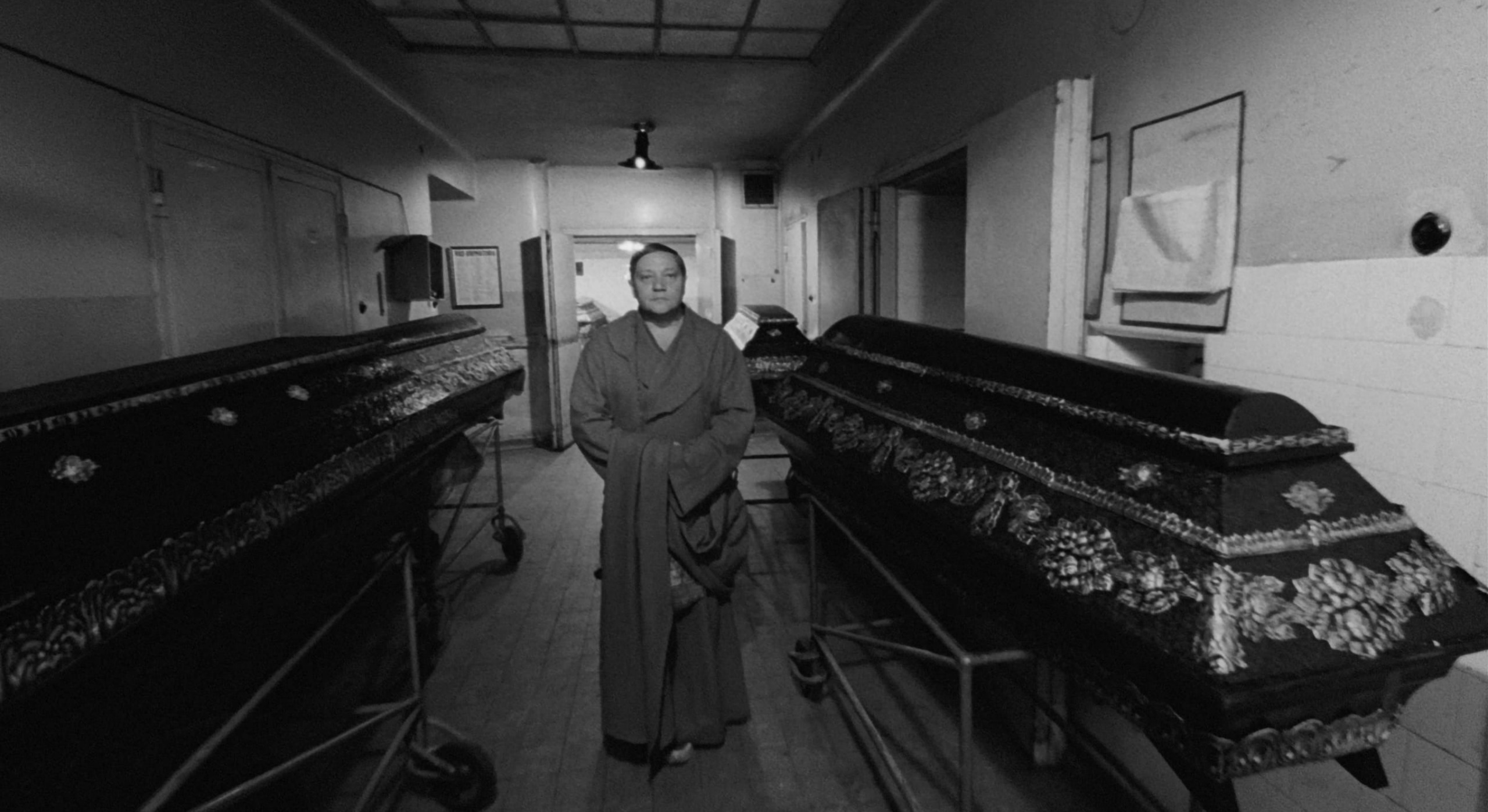The Cremator: “No One Will Suffer”

One of the true dark glories of the Czechoslovak New Wave, The Cremator (Spalovač mrtvol, 1969) is the most popular and indelible work by the underappreciated Juraj Herz and remained a firm favorite of the director’s among his many films. Certainly, this ultimate exercise in ferocious black-comic satire—the tale of a crematorium manager in thirties Prague who descends into Nazi collaboration, murder, and madness—was the fullest realization of Herz’s macabre, grotesque, and ironic sensibilities. The film likewise epitomizes New Wave artistic and political audacity, with its stark, expressionistic black-and-white photography and queasy channeling of the psyche of totalitarianism, in both its Nazi and Stalinist forms. Made during the summer of 1968, as Czechoslovakia’s peaking liberalization movement fell victim to a Soviet-ordered invasion, The Cremator is a testament to a time of cultural freedoms that were soon to be put through the incinerator.
Born in Slovakia but largely active on the Czech side of the film industry, Herz (1934–2018) considered himself an outsider among the celebrated young directors of the sixties Czechoslovak New Wave. Whereas prominent New Wave filmmakers such as Jiří Menzel, Věra Chytilová, and Jan Němec had all attended the national film school, FAMU, at the Academy of Performing Arts in Prague, Herz’s training was in puppetry, in the academy’s theater faculty, DAMU, after which he worked at the city’s Semafor Theatre and then gained a more hands-on apprenticeship in film as a bit-part actor and assistant director (in 1964 he worked in the latter capacity on Ján Kadár and Elmar Klos’s Oscar-winning Holocaust drama The Shop on Main Street). Herz held his own against the New Wave on his directorial debut, The Junk Shop, a contribution to the 1966 portmanteau effort Pearls of the Deep that revealed his incipient eye for the bizarre or disquieting image—though when Pearls of the Deep proved overlong, Herz’s episode was removed and shown separately. The director’s first film, the well-received hospital murder mystery Sign of Cancer (1967), showed a filmmaker who was more interested in genre material than his New Wave contemporaries but shared their critical take on authority. His next feature, the musical-comic romp The Limping Devil (1968), was, for Herz, fatally compromised by preliminary censorship of its more risqué elements. But this disappointment was quickly followed by the film that truly confirmed Herz’s mastery and unlocked a darkly original vision.
Herz first heard about The Cremator, the third novel by noted Czech writer Ladislav Fuks, upon its publication in 1967 and was immediately captivated by its title (Spalovač mrtvol translates literally as “the burner of corpses”). He was disappointed, however, when he actually read the novel: if its title was fit for the marquee, its profuse dialogue and sparse description seemed unpromising material for film adaptation. Nonetheless, the book’s grappling with the Holocaust—a theme repressed under the aggressive, anti-Semitic Stalinism of the fifties—no doubt resonated with Herz, himself a Jewish concentration-camp survivor, and he labored with Fuks on the screenplay for a year and a half.
In contrast to the studio cuts imposed on his first two features, Herz enjoyed an “absolutely free hand” on The Cremator (as he recounts in his 2015 memoir Autopsie, cowritten with Jan Drbohlav). This freedom was enabled by the wider climate of political reform that culminated in the 1968 Prague Spring movement under Communist leader Alexander Dubček—an experiment in democratization unique in Czechoslovakia’s four-decade history of communism, aimed at giving a “human face” to the country’s Soviet-style socialist system. Within the state film industry, the impact of reform was felt in the formal abolition of censorship at Prague’s Barrandov Studios—the major outfit of its kind in Czechoslovakia—in March 1968, and in the increasing decentralization of production: by this time, films at the studio were being developed and produced in self-contained and effectively autonomous “creative units,” supervised by sympathetic artistic and intellectual figures. This was certainly the case with Jiří Šebor and Vladimír Bor’s unit, which produced The Cremator; Herz himself acknowledged the invaluable input of unit script adviser Věra Kalábová. Though the production straddled the Warsaw Pact invasion—the crew was on a break when the tanks rolled into Prague—the film was completed without hindrance (except for the fact that Herz had to coax actor Rudolf Hrušínský, an enthusiastic reformist who feared arrest, out of hiding). The one official intervention came when the head of Barrandov Studios forbade Herz from including a new ending filmed in response to the invasion, in which the beaming cremator protagonist reappears in a Prague now occupied not by the Nazis but by the Soviets.
“Aptly for a film shot in three real—and active—crematoria, the sickly, suffocating air of the mortuary is immediately palpable and pervasive on-screen.”

“The film resembles an essay on the uncanny given vivid cinematic flesh, blurring distinctions between life and death, person and object, even human and animal.”





